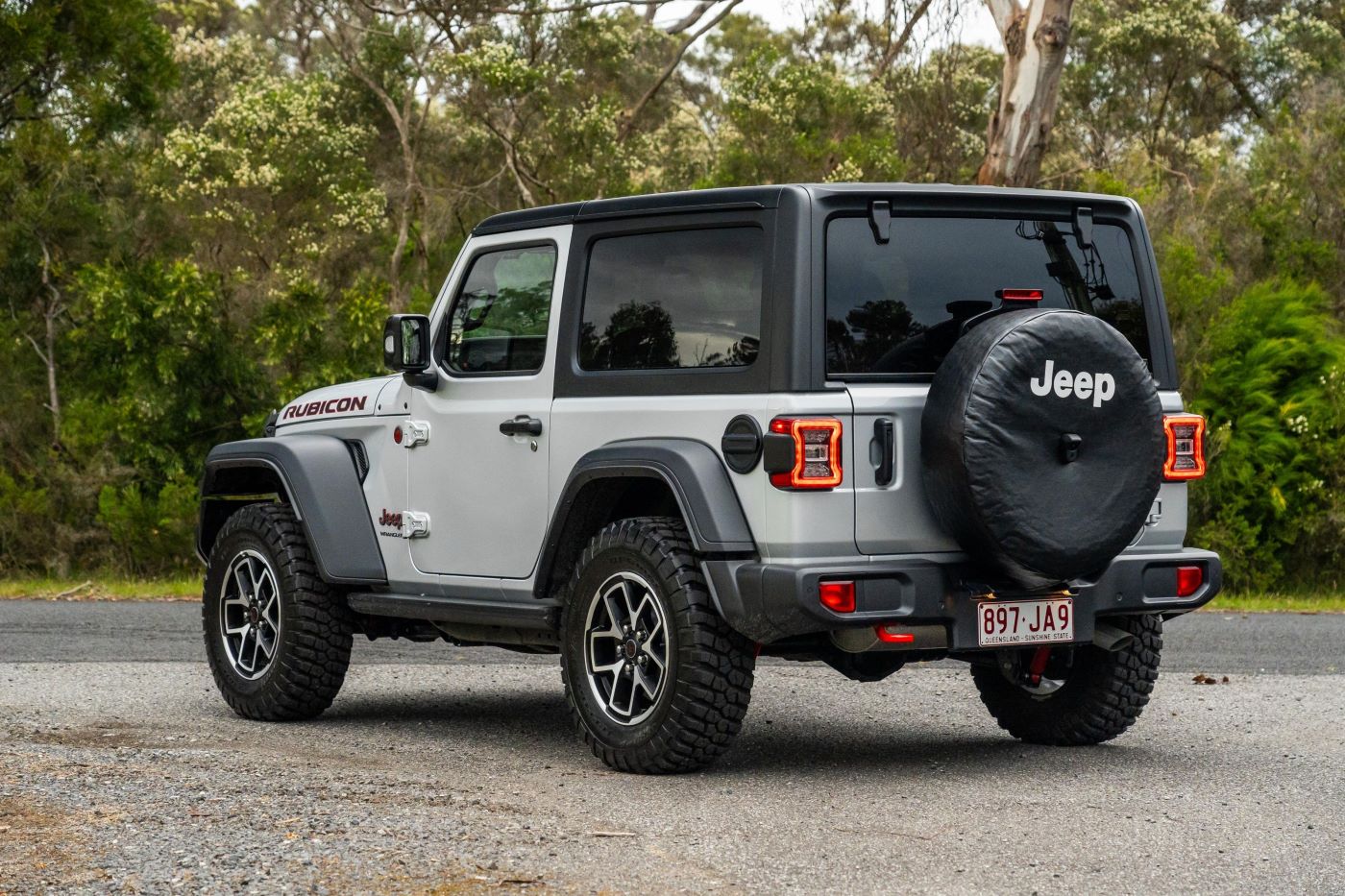Colorado has long been known as a top vacation destination, largely thanks to the appeal of the Rocky Mountains and the world-class skiing available in places like Aspen and Boulder. However, it’s gradually becoming more than just a getaway spot—it’s turning into a sought-after place to live.
People from outside the Centennial State are beginning to see that Colorado offers more than just snow-covered mountains. With its mix of mountain and desert terrain and the red sandstone banks of the Colorado River, it’s an ideal place for those who lead active lifestyles.
5 Cars That Can Handle Colorado Mountains
The weather is reliably sunny and clear, the economy continues to grow even in the wake of COVID, and the state boasts a thriving craft beer scene, excellent restaurants, and legalized marijuana.
There’s been a significant influx of people moving to Colorado, and if you’re thinking about making the move, it’s important to consider your vehicle. These are the top cars for life in Colorado.
1. Toyota 4Runner
There’s hardly a better place to join the 4Runner fanbase than in a region with rugged terrain. And when it comes to handling the Colorado mountains, the 4Runner is among the best options available.
It’s durable, dependable, and built to last—one of the major perks of a model that’s been in production for more than ten years. Admittedly, the V6 engine is thirsty, but there’s a reason it’s regarded as one of the top SUVs for Colorado.
It seems like every time we get behind the wheel of this aging SUV, we find ourselves falling in love with it all over again, regardless of its outdated design or minor shortcomings.
The 2025 Toyota 4Runner brings several strengths to the table. Among its standout qualities are its impressive off-road capabilities, composed road manners, and slightly better fuel efficiency compared to many rivals.
In addition, the model lineup offers a wide range of trims to suit different preferences and needs. However, there are some drawbacks.
Rear seat space is limited, the hybrid powertrain slightly reduces cargo capacity, and overall comfort falls short compared to more conventional SUVs. The optional third-row seat is also quite cramped and not practical for most users.
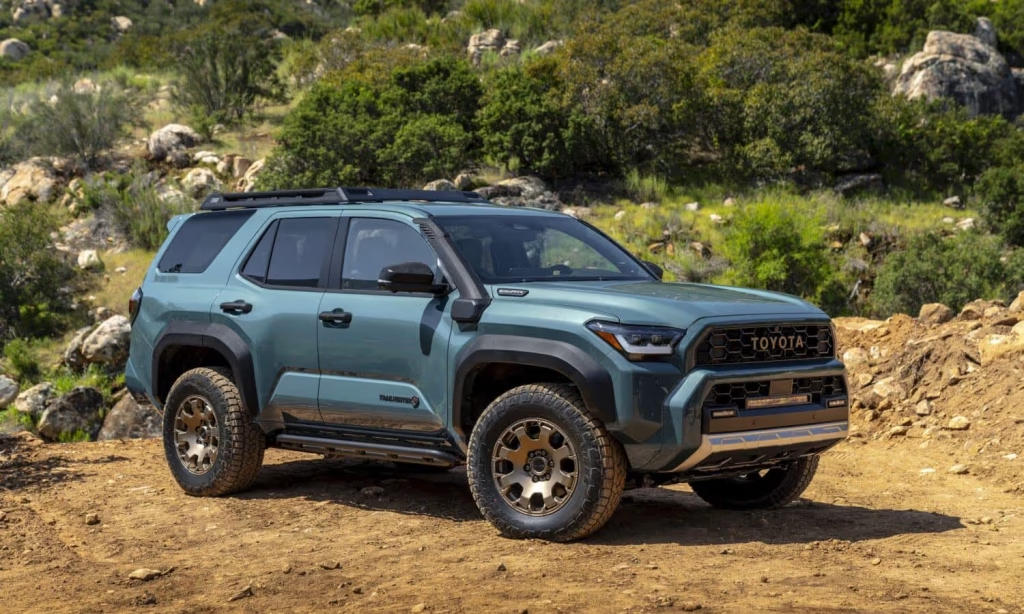
The 2025 model year marks a full redesign for the Toyota 4Runner, ending a 14-year stretch without major changes. While it retains its rugged, midsize, truck-based SUV identity, nearly every other element has been refreshed or upgraded.
The new 4Runner is slightly larger, boasts updated exterior styling, and features a thoroughly modernized interior with Toyota’s latest technology. It also introduces a new engine and a broader selection of trims.
If you’re looking for something more rugged and adventurous than the average crossover SUV but don’t want to go all-in on a Jeep Wrangler or Ford Bronco, the 2025 4Runner may be just what you need. Overall, this new version represents a significant leap forward in the model’s evolution.
Estimated cost-to-drive figures for the 2025 Toyota 4Runner SR5 4dr SUV (2.4L 4-cylinder turbo, 8-speed automatic) are based on driving 15,000 miles per year, with 55% city and 45% highway usage.
These estimates assume an average fuel price of $3.13 per gallon for regular unleaded in North Dakota. Based on this data, the 4Runner SR5 would cost about $172 per month to fuel, which is slightly below the $176 monthly average for midsize SUVs.
Toyota offers an extensive range of choices for those interested in the 4Runner. The lineup consists of nine trim levels and two available powertrains.
The entry-level SR5 is relatively basic in terms of features but provides good value for those shopping on a budget. Several TRD variants will likely attract most buyers with their performance and design upgrades. For shoppers interested in luxury, the Limited and Platinum trims are well-equipped and refined.
Meanwhile, serious off-road enthusiasts will appreciate the TRD Pro or the new Trailhunter model. Every 2025 4Runner comes equipped with a turbocharged four-cylinder engine that replaces the outgoing V6.
This new engine not only improves fuel economy but also offers stronger low-end torque for better performance during low-speed driving. There is also a hybrid version of the engine that delivers additional horsepower and a modest improvement in fuel efficiency.
When comparing the 4Runner to its rivals, you might consider the Jeep Wrangler or Ford Bronco. Both are highly capable off-road vehicles, but they demand more compromise in terms of everyday comfort and refinement.
The 4Runner, in contrast, feels more like a traditional SUV when driving around town or on the highway. Another option worth exploring is the Land Rover Defender.
If you’re considering alternatives within the Toyota lineup, the new Land Cruiser provides even greater off-road prowess and a stylish presence, while the Highlander and Grand Highlander are better suited for family-oriented needs with superior passenger and cargo space.
2. (Almost) Any Subaru
The Subaru Outback is easily one of Colorado’s favorite vehicles, though the real decision lies in choosing whether a traditional car or a crossover is better suited to your needs.
The Outback strikes a great balance as a lifted wagon with added body cladding and enhanced off-road capabilities, especially in the Wilderness trim, which offers an impressive 9.5 inches of ground clearance.
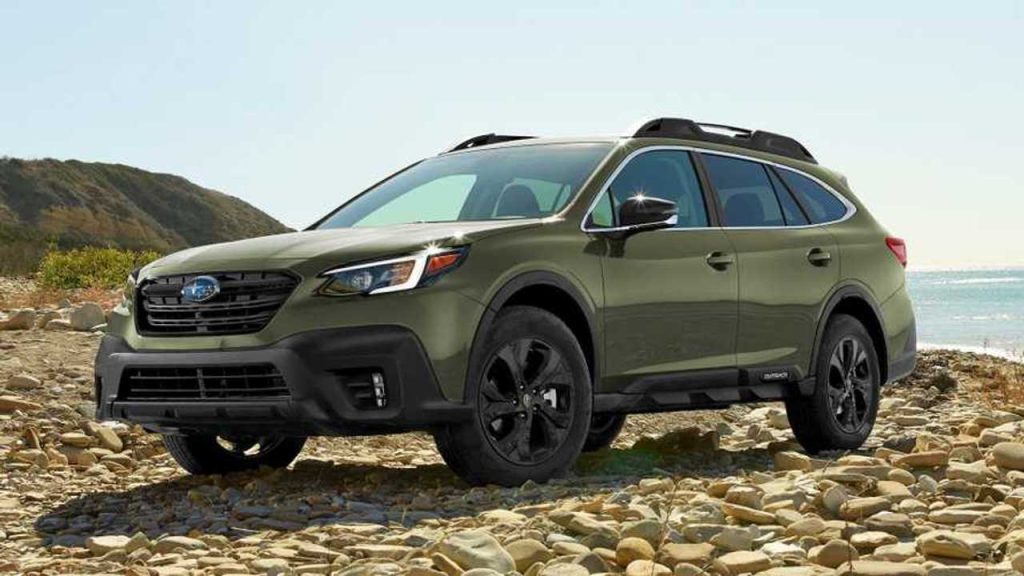
Subaru equips nearly all its models—except for the BRZ sports car—with its signature symmetrical all-wheel-drive system, a key feature that makes the brand highly respected in snowy and wet conditions.
For those who prefer a more SUV-like design, Subaru also offers rugged and reliable options such as the Ascent, Forester, and the budget-friendly Crosstrek. If you’re going to encounter Subaru enthusiasts anywhere, there’s a good chance it’ll be in Colorado.
3. Jeep Wrangler
If you plan to spend a lot of time away from paved roads, the Jeep Wrangler is likely to be high on your list. It’s far from pleasant to drive on the highway, but it delivers a dependable level of off-road performance.
From there, it’s all about how much you want to push it. You can start with a base model and upgrade through the aftermarket as your off-road skills grow and your adventures take you further into the wilderness.
On the other hand, if you’re more interested in the aesthetic and only plan to tackle a dirt trail occasionally, a soft top with the doors removed will help you look the part. Much like the 4Runner, the Wrangler is powered by a tried-and-true V6 engine that may lack polish but performs well in a rugged vehicle like this.
You’ll find plenty of customization options, too, such as the Rubicon’s 33-inch all-terrain tires and high-clearance fender flares, which make it even more capable for challenging off-road excursions.
Few vehicles on American roads are as instantly identifiable as the Jeep Wrangler. The 2024 model maintains a design so similar to that of its predecessors that it could easily be mistaken for one made two decades ago.
This consistency creates an endearing sense of familiarity. Like the original Volkswagen Beetle, the Wrangler has stuck closely to its foundational formula: a recognizable silhouette, benchmark-setting off-road performance, and solid axles.
In contrast to competitors such as the Land Rover Defender, it has not transitioned into a vehicle of luxury, refinement, or steep pricing. The Wrangler’s rugged simplicity, while great for tackling the trail, comes at the cost of daily comfort.
This results in high levels of noise, a lack of refinement, and imprecise handling. Despite those shortcomings, nothing in its class can match the Wrangler’s unwavering focus on off-road capability—aside from possibly the Ford Bronco.
The Ford Bronco does have the upper hand in several areas. It offers a more polished driving experience, in part due to its independent front suspension, and it consistently outperforms the Wrangler in safety and crash tests.
Jeep continues to refine the Wrangler, introducing meaningful upgrades like a much-improved infotainment system and the addition of curtain airbags—a first for the model. Thanks to these updates, the Wrangler remains relevant and ready for the trail.
The 2024 Jeep Wrangler starts at $31,895 for the base Sport trim. This reflects a modest $700 increase from the previous model year, which is more than justified by the addition of curtain airbags, a new infotainment system, and other improvements. Moving up the lineup, the Sport S is priced at $35,395, followed by the new Willys at $39,395.
Next is the Rubicon at $45,395, with the Rubicon X topping out at $54,895. These figures apply to the standard two-door body style, equipped with a 285-horsepower naturally aspirated Pentastar V6 engine and a six-speed manual transmission.
Each of these trims is also available in a four-door configuration, which adds $4,000 to the cost. The Sahara trim is offered exclusively as a four-door and is priced at $47,825.
The Wrangler’s alternative engine is a 270-horsepower turbocharged four-cylinder, which is only available with an eight-speed automatic transmission. Adding this powertrain to any trim increases the price by $2,500.
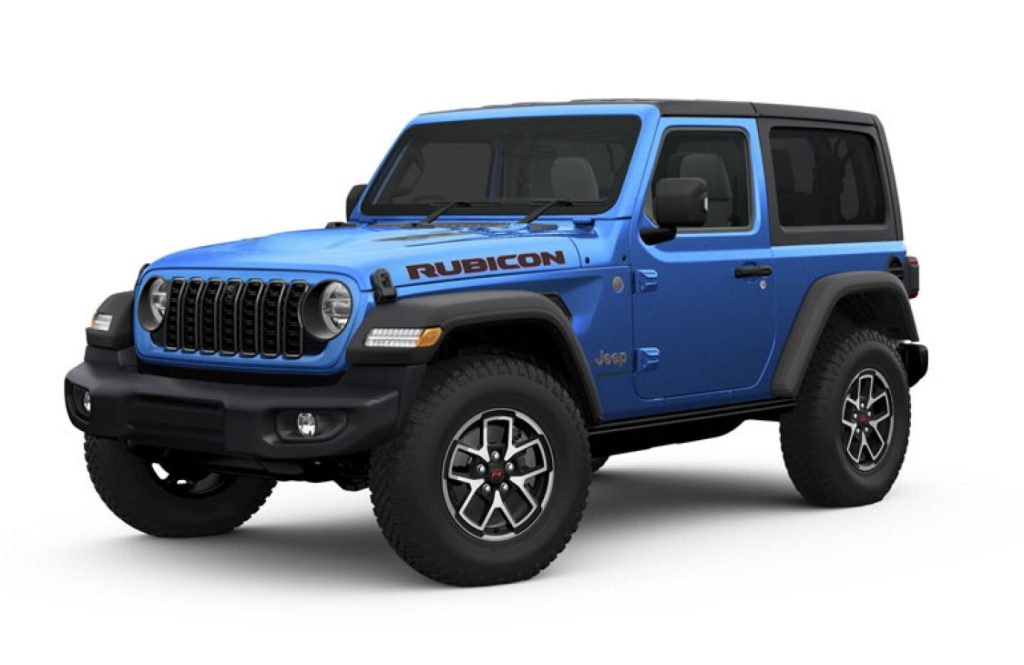
The hybrid 4xe models, all four-door versions, range from $49,995 for the Sport S to $69,085 for the Rubicon X. It’s worth noting that none of these prices include Jeep’s $1,795 destination fee.
The Wrangler is not meant to serve as a substitute for a conventional, car-based crossover in everyday driving, so it’s best to set aside any such expectations.
It delivers a ride that is both bouncy and cumbersome, with vague steering and all the typical movements associated with a body-on-frame design and solid axles. It tends to lean significantly in corners and offers limited grip.
On the highway, its boxy shape contributes to poor fuel efficiency, and wind noise can be so intense that it interferes with conversations—whether with passengers or during phone calls.
Though the Wrangler is capable of handling routine tasks, it’s not enjoyable to drive in such conditions. It is designed with one purpose in mind: to reach challenging off-road destinations. In that regard, it excels.
With serious off-road components, oversized tires, and specialized features available in higher trims, the Wrangler remains an incredibly capable machine when the pavement ends.
In those moments, the same suspension articulation and steering characteristics that hinder on-road driving become advantages, delivering outstanding off-road performance that only the Bronco can rival.
4. Hyundai Santa Cruz
The Santa Cruz is only recently starting to gain recognition among outdoor enthusiasts, but it’s proving to be a great fit for that lifestyle.
Essentially, it offers the comfort and everyday convenience of the Hyundai Tucson crossover, but with the added benefit of a truck bed. That means you can toss in muddy hiking boots or wet camping gear without dirtying the interior.
If you don’t need the bulk or rough ride of a body-on-frame pickup or an oversized bed, but still want a capable all-wheel-drive system for tricky conditions, the Santa Cruz stands out as one of the most practical vehicles for life in Colorado.
If you appreciate the utility of a pickup truck but find popular models like the Chevy Silverado and Ford F-150 either too large or too expensive, the 2025 Hyundai Santa Cruz might be exactly what you need.
This compact pickup is based on the Tucson crossover, but its four-foot truck bed adds practicality for hauling bulky items such as mountain bikes or a yard of mulch for your flower beds. The Santa Cruz comes standard with a 191-horsepower four-cylinder engine, available with either front-wheel drive or all-wheel drive.
For those interested in towing, the optional 281-horsepower turbocharged four-cylinder offers livelier acceleration and boosts the maximum towing capacity to a solid 5,000 pounds.
Beyond its workhorse capabilities, the Santa Cruz offers a refined ride, a quiet and attractive cabin, and plenty of desirable convenience and technology features. In other words, it’s just as easy to live with as the Tucson SUV.
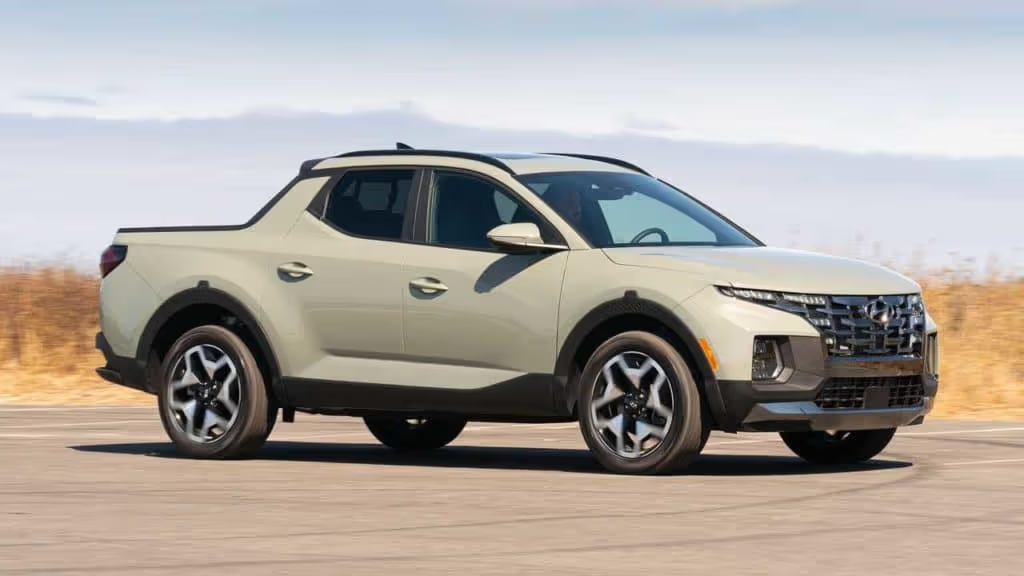
Though it is only in its fourth model year, Hyundai has given the Santa Cruz a minor styling refresh for 2025 to give it a tougher, more rugged look.
The redesigned grille and front bumper resemble those of the 2025 Tucson SUV, while the all-terrain XRT model takes the ruggedness even further with a distinctive front-end design featuring tow hooks, exclusive 18-inch wheels with beefier tires, and new daytime running lights. Inside, the optional dual-screen infotainment system has been overhauled with Hyundai’s latest technology.
The separate infotainment and gauge displays found on the 2024 Santa Cruz’s top trims have been replaced by a single integrated panel housing two 12.3-inch screens and an updated software interface.
This new system supports wireless Apple CarPlay and Android Auto, offers over-the-air updates, includes USB-C ports, a fingerprint scanner for security, and Hyundai Pay, the company’s in-vehicle payment system.
Lower trims come equipped with a single 12.3-inch infotainment display alongside analog gauges. Additionally, the dashboard and center console have been redesigned, along with updates to the steering wheel and the climate control button layout.
5. Toyota Tacoma
When you’re considering which vehicle is best for relocating to Colorado, there’s a good chance you’ll want a truck. And unless you’re planning to tow or haul very heavy loads, the Tacoma is an excellent pick.
Like the 4Runner, it’s starting to show its age, but Toyota continues to sell it in huge numbers—pun intended. You have the flexibility of choosing between rear-wheel or all-wheel drive, along with a four-cylinder or V6 engine, depending on your driving needs and fuel budget.
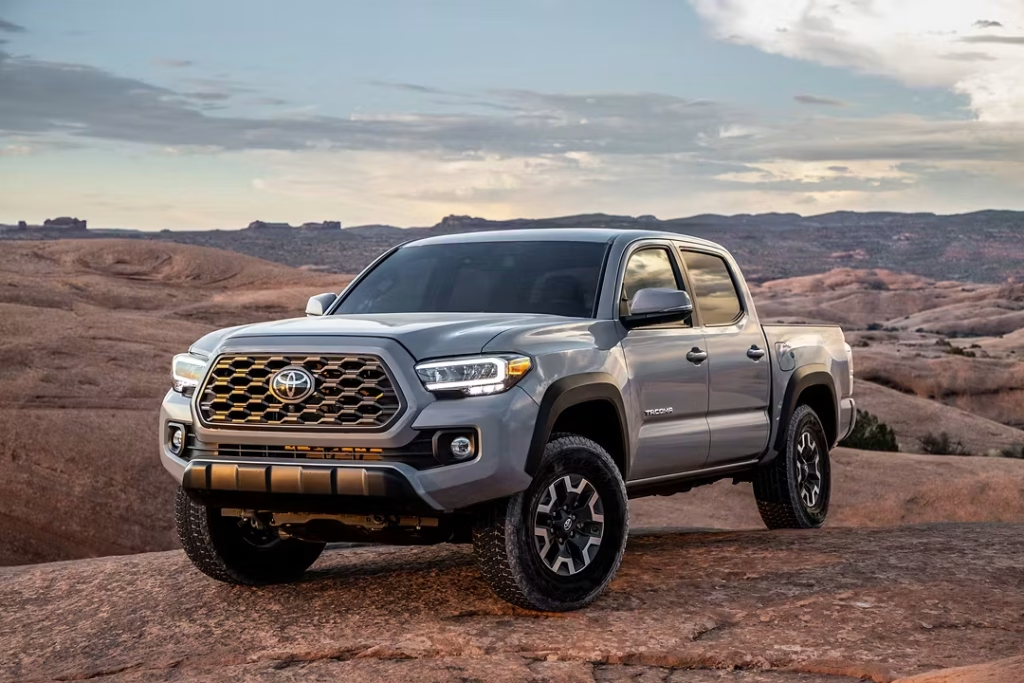
For those embracing the outdoor lifestyle, the truck bed can handle skis, snowboards, or just about any gear you want to bring along. Also like the 4Runner, the Tacoma has a reputation for outstanding durability and off-road prowess, though it doesn’t offer much excitement when driving on paved roads.
Worst Cars For Hill Driving
Some cars are simply not suited for mountain driving due to their lack of power, stability, or durability on steep and winding roads.
Smart Fortwo
One example is the Smart Fortwo, a tiny city car that struggles with inclines because of its underpowered engine and jerky transmission. Its small size makes it easy to maneuver in tight spaces, but it’s highly unstable and not built for mountainous terrain.
Smart, the renowned small-car specialist, is currently exploring the possibility of reviving its iconic two-seat ForTwo for the modern era. The brand’s European CEO emphasized that the model will remain true to Smart’s core values and is expected to “define the A-segment.”
Industry insiders suggest that the new ForTwo could arrive before the decade ends, with an estimated starting price of around £20,000.
While the upcoming model is expected to preserve its hallmark compact size and surprisingly spacious interior, it will not lean into a retro design aesthetic.

When asked if the design team is drawing inspiration from vehicles like the new Renault 5, MINI, or Fiat 500, Adelmann commented, “I really like [the R5] from a design perspective; when you sit inside – cool, cool, and cool.
But if we come back with a vehicle that is significantly smaller in size than #1 and #3, then we will make sure it’s a true Smart. That doesn’t have to be retro; Smart doesn’t usually do retro – we are looking at what’s next.”
Given the visual distinction Smart has established between its current models—the #1 and #3—and the forthcoming, boxier #5, it is expected that the new city car will take on a unique design language of its own.
Toyota Prius
Similarly, the Toyota Prius, especially older models, performs poorly in high-altitude environments. Its low ground clearance makes it unsuitable for rough roads, and the hybrid system, while efficient in the city, often lacks the torque needed for steep climbs.
Additionally, the continuously variable transmission (CVT) can overheat during long uphill drives. You might assume that Hollywood stars prefer to drive exotic or ultra-luxurious vehicles, yet the Toyota Prius has famously attracted quite a few celebrities due to its eco-friendly image.
In fact, when the word “hybrid” is mentioned, the Prius name often comes to mind immediately. It is undeniably a car closely associated with the combination of petrol and electric power designed to maximize fuel efficiency.
The fifth-generation Prius features rakish styling and more balanced proportions, making it much more visually appealing than its predecessor.
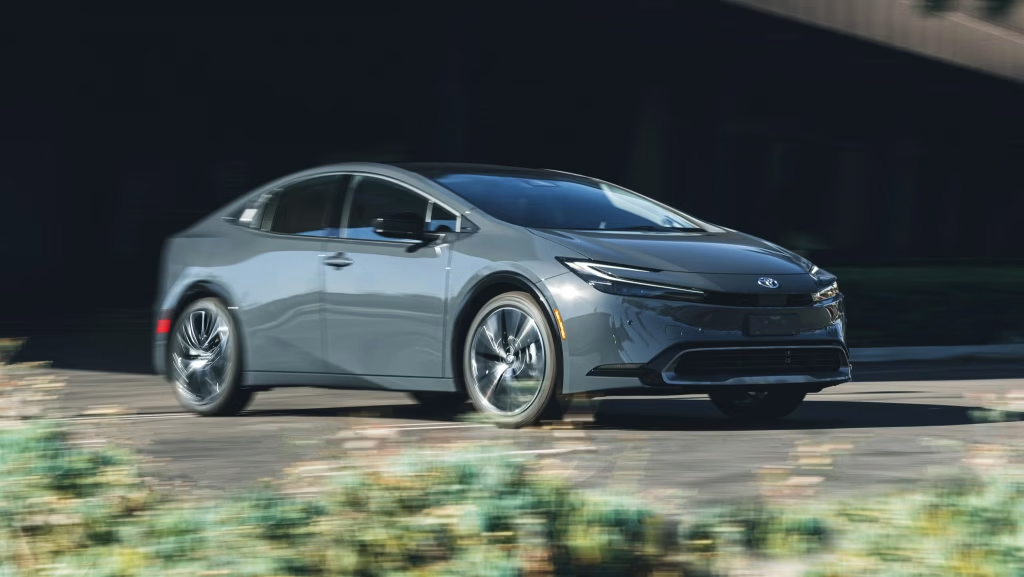
Since it shares its platform with the Toyota Corolla, it also promises improved driving dynamics. Another major update is that the Prius is now available exclusively as a plug-in hybrid (PHEV), allowing drivers to travel up to 44 miles solely on electric power.
This new model could very well be the best Prius yet, but it faces plenty of strong competition in the highly competitive family and company car markets. Rivals include the Peugeot 308 Plug-in Hybrid and the VW Golf eHybrid, with the updated Audi A3 in 40 TFSIe trim also set to arrive soon.
The Toyota Prius is more appealing than ever, and this latest version is the best we’ve tested. It’s quieter and offers a more comfortable ride than the VW Golf eHybrid, while maintaining strong fuel efficiency even when the battery is depleted.
However, rear passenger space remains tight, and the Golf eHybrid is a better choice for company car buyers due to its much longer electric-only range. The more affordable entry-level Design trim is likely to be the best option.
Pros include strong fuel economy even with a depleted battery, a good driving experience, and easy-to-use interior controls. On the downside, it feels sluggish on the open road, has grabby brakes, and offers poor rear headroom.
The Prius offers only one engine option, but it’s a solid choice. Under the hood is a 2.0-liter petrol engine paired with an electric motor, producing a combined output of 220 horsepower. During testing, it achieved a 0-60 mph time of 6.9 seconds, matching the VW Golf eHybrid tested on the same day.
In hybrid mode, the Prius starts from a standstill using the electric motor, with the petrol engine joining as speed builds.
When both power sources operate together, the Prius responds eagerly to sudden acceleration demands and feels less lethargic than the Golf eHybrid when the battery is low. Running on battery power alone, the electric motor handles low-speed traffic with ease, though you’ll need to press the accelerator more to reach higher speeds.
The 13.6 kWh (usable) battery provides an official electric-only range of up to 44 miles. In real-world testing, we achieved 37.6 miles in a top-spec Excel version equipped with larger 19-inch wheels.
The Design trim, which has smaller 17-inch wheels, should slightly improve on this result, but either way, the Prius beats the 308 PHEV’s official 35-mile range. Regenerative braking is standard and helps recharge the plug-in hybrid battery when you lift off the accelerator.
The Prius features a default adaptive setting that automatically uses regenerative braking to slow you down when approaching corners or maintaining distance from the car ahead. For a constant braking effect, a simple nudge of the gear lever from D into B mode activates it.
Pressing the lever further increases braking strength through up to three levels. In the strongest setting, the Prius will slow to a walking pace without feeling too aggressive.
When you do need to apply the brakes, the response is firm and precise, allowing smooth stops. While the petrol engine gets noticeably vocal under hard acceleration, it is quieter and less coarse than the Golf eHybrid’s engine.
Road noise is relatively low, and the Excel trim’s laminated side windows further reduce wind noise, making the Prius a comfortably quiet long-distance cruiser. The CVT automatic transmission also contributes to delivering power more smoothly than rivals.
Among PHEV family hatchbacks, the Prius is one of the most comfortable. Its ride stays composed, with suspension effectively smoothing out bumps and potholes better than the Golf eHybrid. The Prius also feels stable and well controlled over uneven roads.
Though not a sporty car by any means and with less outright grip than some rivals, the Prius provides a good sense of connection through the steering. Its smaller steering wheel enhances response, making the Prius feel more precise and engaging to drive than both the Peugeot 308 PHEV and the VW Golf in everyday driving.
Nissan Versa
Another weak performer is the Nissan Versa, a budget-friendly compact car that lacks the horsepower and handling required for safe and confident mountain driving. Its brakes are prone to fading on long descents, and its overall driving dynamics are too soft for twisty, elevated roads.
Nissan now offers three free oil changes during the first two years or 24,000 miles of ownership. Additionally, all trim levels come standard with LED headlights.
The 2025 Nissan Versa is priced starting at $18,330 and goes up to $22,330 depending on the trim level and options. The base S trim costs $18,330, the mid-level SV is priced at $21,630, and the top-tier SR comes in at $22,330. Among these, the Versa SR is the one we recommend.
Although it is the most expensive version, it offers a wealth of desirable standard features that make it worth the price. Both the SR and the slightly more affordable SV trims come with automatic transmissions, and their infotainment systems include Apple CarPlay and Android Auto.
However, only the SR features 17-inch wheels, a leather-wrapped steering wheel, passive entry, and remote start. For those living in colder climates, we also suggest adding the Convenience package for its heated front seats.
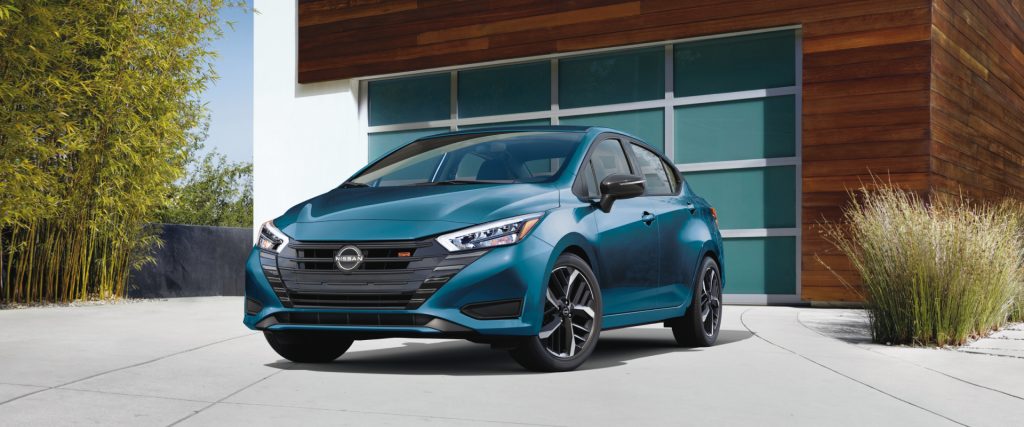
Every Versa is powered by a 122-horsepower four-cylinder engine driving the front wheels. A five-speed manual transmission is standard on the base S trim, but a continuously variable automatic transmission (CVT) is available on the S and comes standard on the SV and SR trims.
Although the Versa can feel sluggish when accelerating from a stop or passing on the highway, the CVT helps reduce harsh engine noises by simulating gear shifts.
The Versa we tested delivered a smooth ride that effectively absorbed road imperfections. It was also much improved over the previous generation in terms of driving dynamics, with accurate steering feedback and consistent brake-pedal feel.
Chevrolet Spark
The Chevrolet Spark also fares poorly in mountainous regions due to its low engine output and small size. It has difficulty maintaining speed on climbs and can feel unstable on sharp turns or in poor weather conditions.
A new car priced under $15,000 might sound like you’re paying to drive a penalty box, but the 2022 Chevy Spark puts those fears to rest.
The biggest downsides are its painfully small back seat and the sometimes frustrating process of folding the rear seats. While cramped rear quarters are common in this class, competitors like the Hyundai Accent and Kia Rio offer slightly more room.
The interior isn’t fancy, but it doesn’t suffer from the cheap materials that mar rivals like Mitsubishi. Chevy’s infotainment system stands out for being content-rich, intuitive, and easy to use.
Every 2022 Spark comes with an engine that feels underpowered at highway speeds, but it works fine around town and in traffic where the car’s nimbleness shines. For the best driving experience, the manual transmission available on all trims is recommended—a rarity nowadays.
For 2022, the Spark arrives without significant changes. It remains one of the least expensive new cars on the market, priced about $1,500 less than the similarly affordable Mitsubishi Mirage.
Unfortunately, Chevy announced the Spark will be discontinued after the 2022 model year, with production continuing through August.
Although no trim is loaded with features, upgrading to the 1LT brings useful additions such as satellite radio and keyless entry. However, the $1,100 continuously variable automatic transmission (CVT) is not recommended.
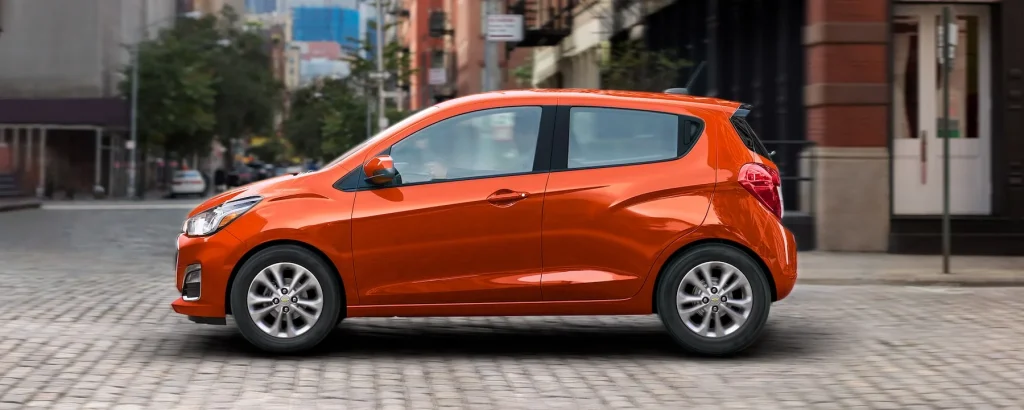
If you don’t know how to drive a manual, this is a good reason to learn. The faux-off-road Activ trim isn’t worth the extra cost, so keeping it simple with the regular Spark trims is best.
Every Spark is powered by a modest four-cylinder engine paired with either a five-speed manual or a continuously variable automatic transmission (CVT). The CVT manages power smoothly without droning engine noise.
The Spark is responsive at low speeds in city driving but sluggish when accelerating on highways, making it less suitable for long trips. Its short wheelbase helps it maneuver easily through tight spaces and slow-moving traffic, without sacrificing ride comfort.
However, it feels bouncy on uneven roads, with harsher bumps only mildly absorbed. Despite this, rattles and road noise are less noticeable than in rival economy cars.
The steering is direct and provides good feedback, remaining composed at highway speeds and making lane changes easy without feeling twitchy. The firm brake pedal delivers strong, consistent stopping power, allowing the driver to slow down quickly and confidently.
Kia Rio
Lastly, the Kia Rio is another car that’s better left in the city. With no all-wheel drive option, minimal ground clearance, and a lightweight frame, it doesn’t inspire confidence on mountain roads.
The engine’s limited power output makes it struggle on steep grades, and it lacks advanced features like hill descent control that are crucial for safe mountain travel. Overall, cars like these are best avoided in mountainous environments where power, control, and durability are essential.
Like many models that aren’t SUVs or crossovers, the subcompact sedan is gradually disappearing from the U.S. market.
It’s unfortunate because reliable, budget-friendly family cars in this body style still have plenty to offer. The 2023 Kia Rio is a prime example—an affordable, efficient, and well-equipped sedan that often doesn’t receive the recognition it deserves.
Powered by a standard 1.6-liter inline-four engine producing 120 horsepower and 112 lb-ft of torque, it achieves an impressive 36 mpg combined. While it may not be the most thrilling car to drive, it certainly isn’t bland.
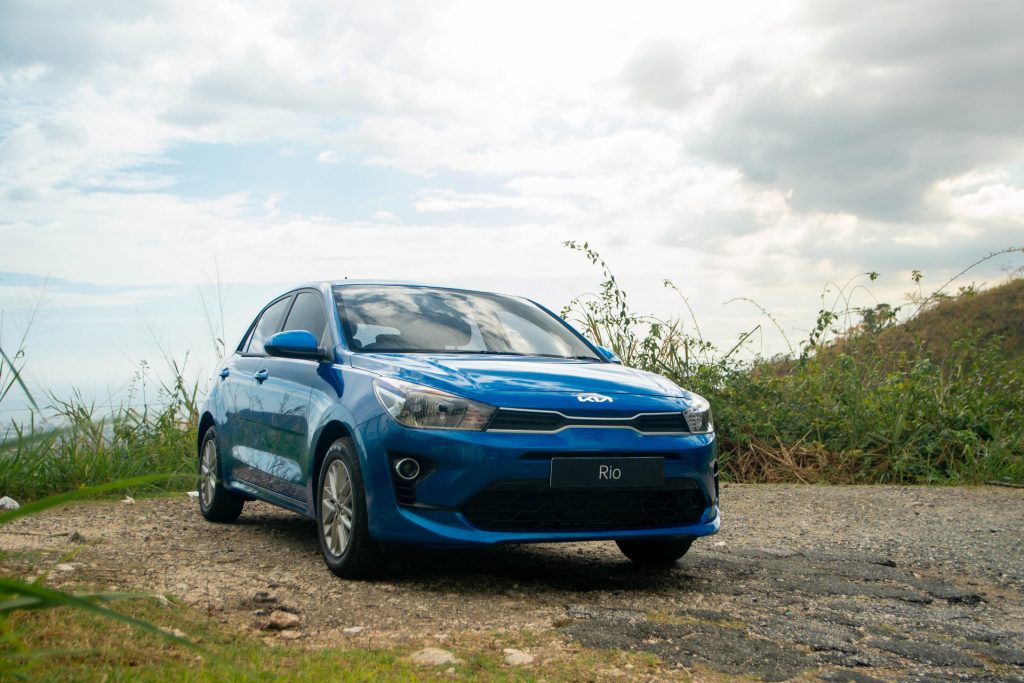
Its competitors include the similarly affordable Nissan Versa and Hyundai Accent, although the latter was discontinued last year. This only makes the Rio a more attractive option, especially since you can find a fully loaded version for around $20,000 right off the showroom floor.
When it comes to pricing, “affordable” is the key word. The Kia Rio makes no pretense about being a budget-friendly compact sedan, and with more Americans opting to downsize to cheaper vehicles, the Rio is well positioned.
The base LX trim starts at a remarkably low MSRP of $16,750. The top-tier S trim costs $17,390, and if you add options, the price can exceed $20,000. These figures do not include a destination charge of $1,125 within the U.S.
Driving the 2023 Kia Rio sedan is a pleasant surprise amid a sea of unremarkable budget cars. It’s easy to assume vehicles in this segment serve merely as transportation from point A to point B, and often that’s the case. However, the Rio challenges that notion by delivering a surprisingly responsive drive.
Although the steering feels somewhat numb and the engine doesn’t offer spirited performance, the Rio handles corners impressively well. Its suspension is finely tuned to smooth out bumps and absorb most major road imperfections, resulting in a comfortable ride.
Some might find the ride a bit firmer than necessary, but those who enjoy a slightly spirited drive will appreciate its lack of wallowing. The car’s predictable and solid feel adds confidence to drivers of all skill levels.
Is the 2023 Kia Rio a good car? While it’s easy to find criticisms in a price-sensitive segment where vehicles are often barebones, the Rio leaves fewer negatives than expected. The trunk space is limited, and if you prioritize cargo room, you might prefer the hatchback version, which we review separately.
Cramped rear seats are a common complaint among subcompacts and hardly unique to the Rio. Overall, Kia has crafted a handsome vehicle with solid build quality, strong reliability prospects, and a pleasant driving experience.
Opting for the higher-spec S trim with the Technology Package will provide a modern, well-equipped family car that includes adequate safety and tech features—all for a little over $20,000.

